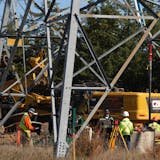1926 Col. Lewis Brittin founds Northwest Airways as a Michigan corporation to carry air mail from the Twin Cities to Chicago. Operations are based at Speedway Flying Field on the site of today's Minneapolis-St. Paul International Airport.
1927 Passenger service begins, with 106 total passengers by year's end.
1929 Twin Cities businessmen, led by Richard C. Lilly of St. Paul, purchase the company from the Michigan investor group.
1930 Operations base moved to what is later St. Paul's Holman Field.
1934 Northwest Airways is reincorporated under Minnesota law as Northwest Airlines Inc.
1939 First stewardess is hired to work on the newly purchased DC-3 carrying 21 passengers.
1941 Northwest common stock goes public for the first time.
1947 Becomes the first commercial airline to fly from the United States to Japan. It rebrands itself as Northwest Orient Airlines.
1960 Moves into new headquarters at Wold-Chamberlain Field (now Minneapolis-St. Paul International Airport).


